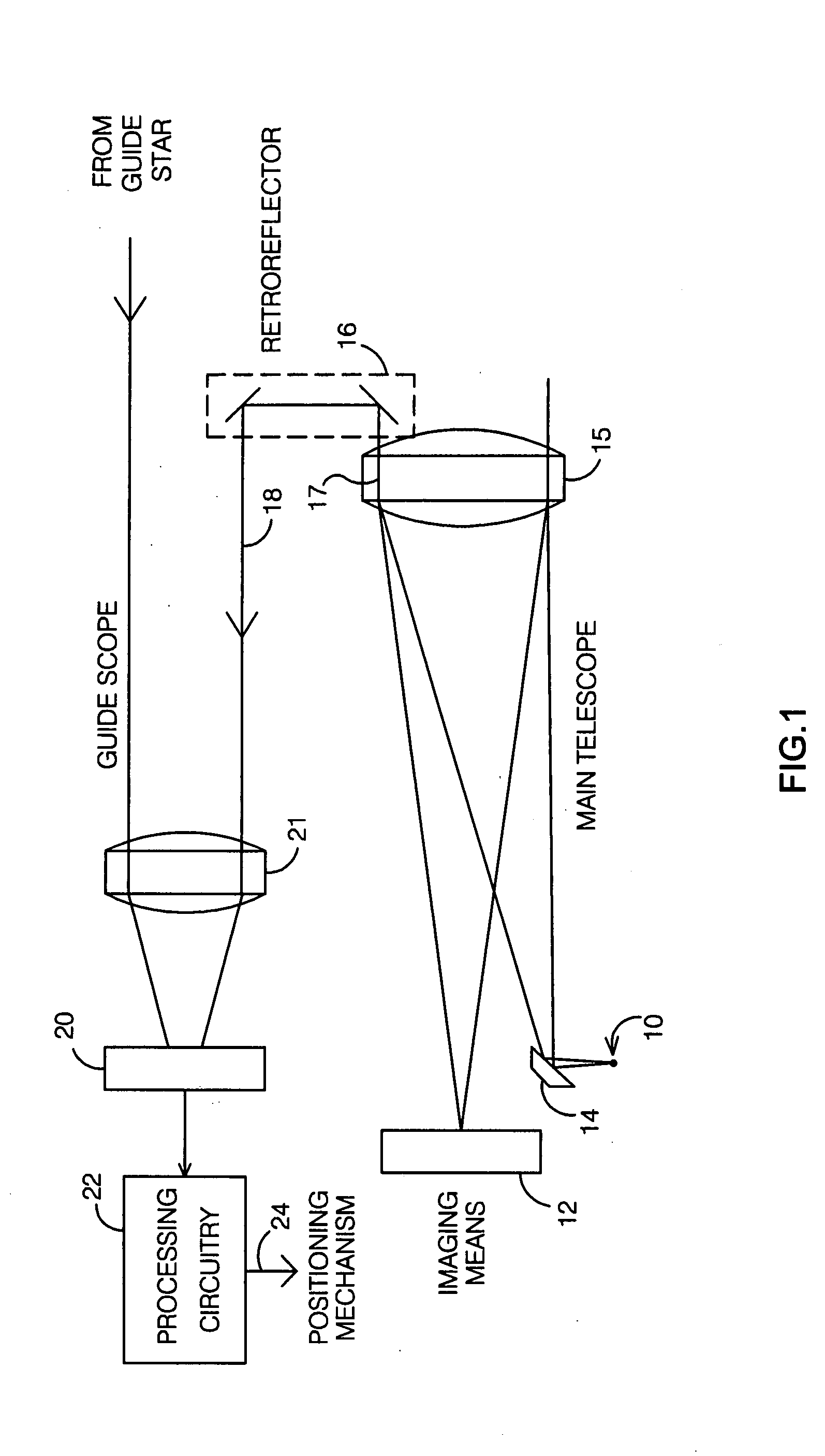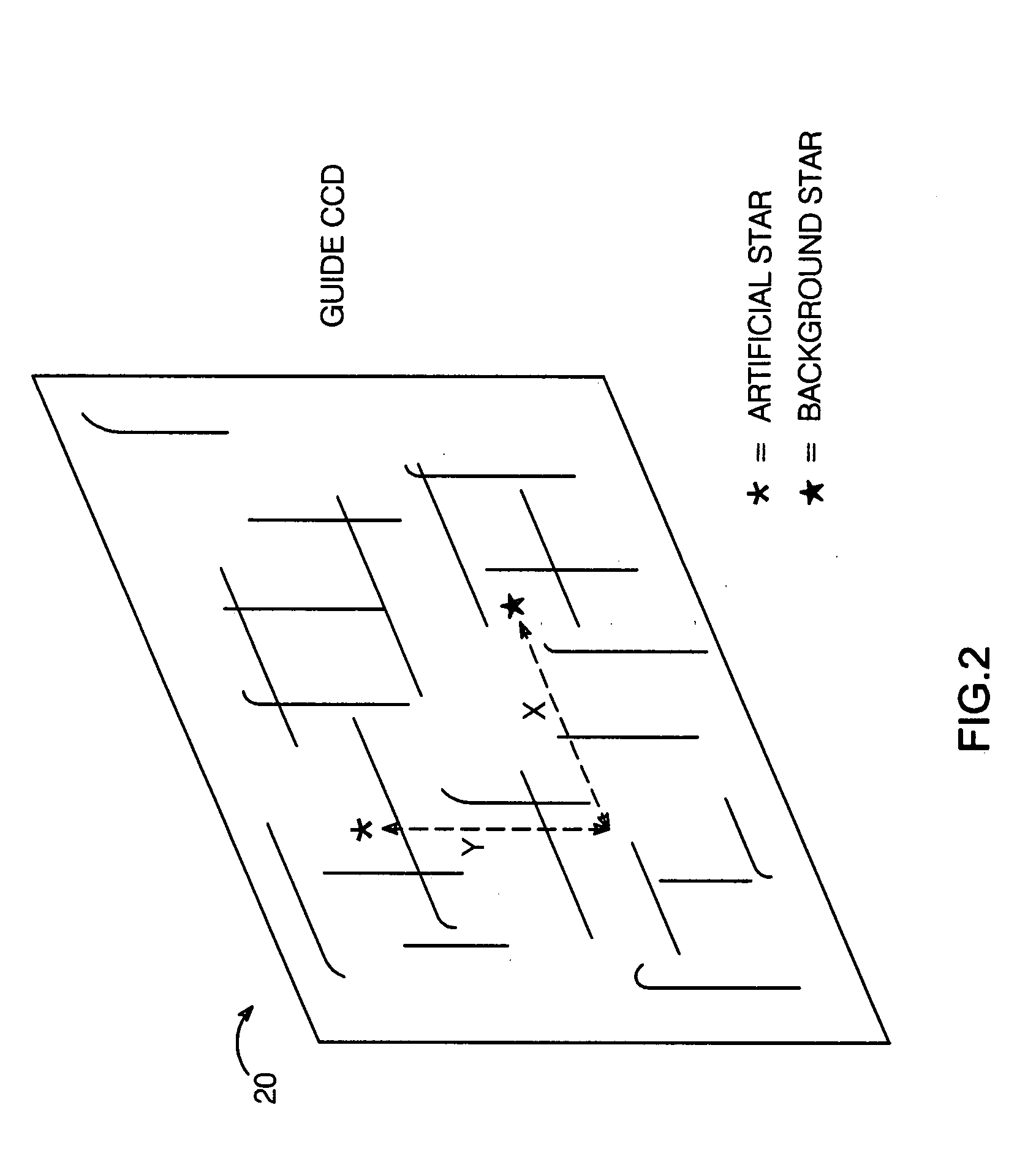System and method for telescope guiding utilizing an artificial reference star
a technology of artificial reference star and telescope, applied in the field of telescopes, can solve the problems of wasting a portion of the ccd area, user must refocus the guide ccd, and long exposure time is required
- Summary
- Abstract
- Description
- Claims
- Application Information
AI Technical Summary
Benefits of technology
Problems solved by technology
Method used
Image
Examples
Embodiment Construction
[0023]The new method of guiding an optical device is described. The method is applicable whenever there is a guide means which facilitates the proper positioning of a main imaging means. A primary application is a telescope system having a main scope, the positioning of which is facilitated with the use of a guide scope.
[0024]The method involves creating an artificial reference star in the FOV of a guide scope which is locked to the line of sight of the imaging means of the main scope. A real guide star is selected which is within the FOV of the guide scope; the guide scope has an associated focal plane on which both artificial and real guide stars are focused. Guiding of the main scope is effected by maintaining its line of sight such that the positional displacement between the selected real guide star and the artificial star on the guide scope's focal plane is maintained approximately constant.
[0025]One possible embodiment of a guide means per the present invention is shown in FI...
PUM
 Login to View More
Login to View More Abstract
Description
Claims
Application Information
 Login to View More
Login to View More - R&D
- Intellectual Property
- Life Sciences
- Materials
- Tech Scout
- Unparalleled Data Quality
- Higher Quality Content
- 60% Fewer Hallucinations
Browse by: Latest US Patents, China's latest patents, Technical Efficacy Thesaurus, Application Domain, Technology Topic, Popular Technical Reports.
© 2025 PatSnap. All rights reserved.Legal|Privacy policy|Modern Slavery Act Transparency Statement|Sitemap|About US| Contact US: help@patsnap.com



